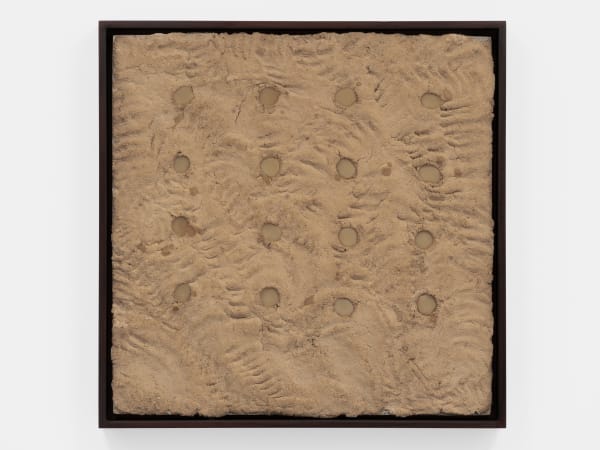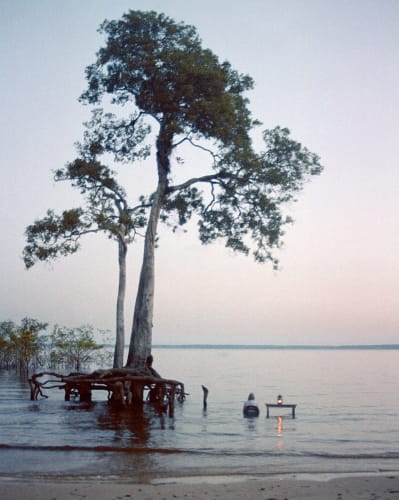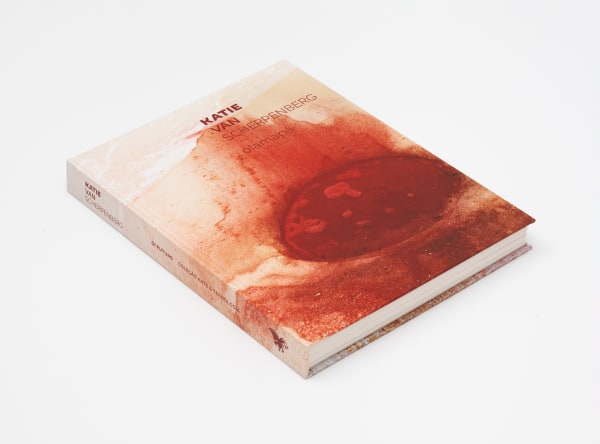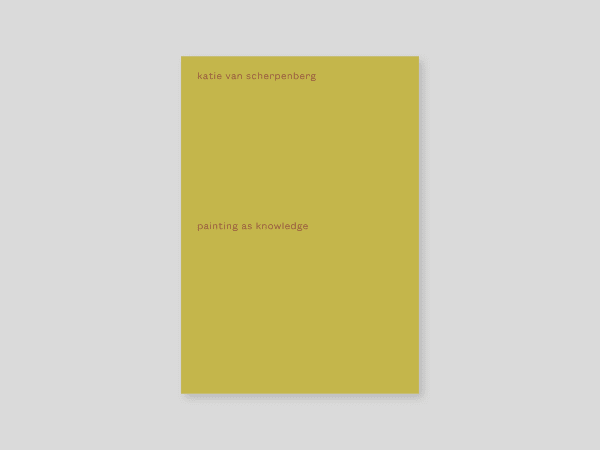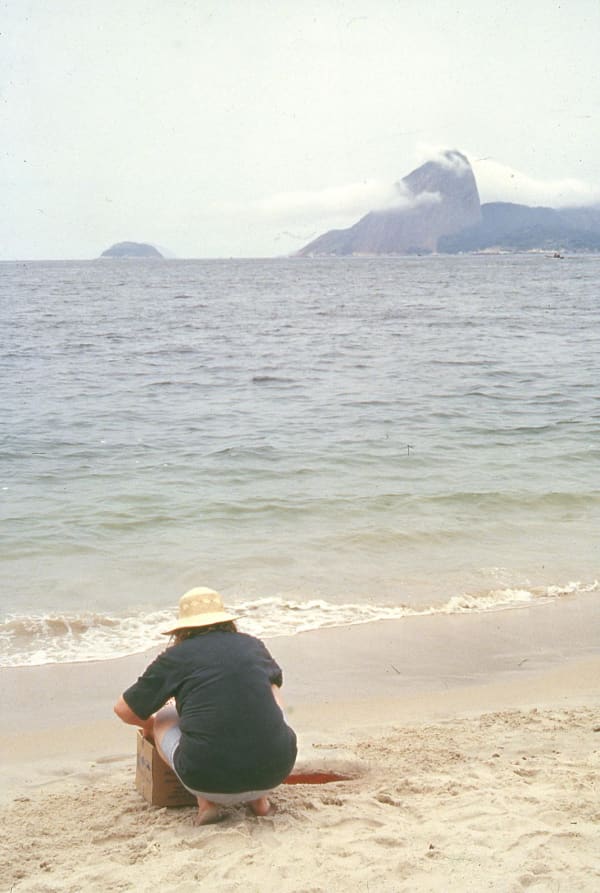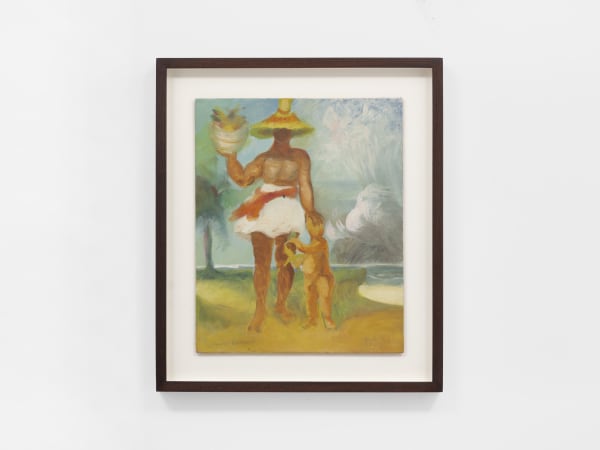Katie van Scherpenberg Brazilian, 1940-2025
With a career spanning more than 50 years, Katie van Scherpenberg developed a very singular, original and consistent body of work: a continual, cerebral examination of the medium of painting, influenced by her numerous relocations, the changing political context of her native Brazil, and her deep engagement with the natural environment. Her formative years were spent between Brazil and Europe, completing her studies in England, and a two-year scholarship granted by the German government in 1961-63 that allowed her to study painting in Munich with Georg Brenninger (1909-1988) and in Salzburg with Oskar Kokoshcka (1886-1980). Van Scherpenberg returned to Rio de Janeiro in 1964, one week after the military coup that installed a dictatorial regime that would remain in power for the next two decades.
In 1968 she took the radical decision to move and settle in the remote Amazonian island of Santana. Here on an island by one of the world’s most important rivers, she spent most of the next 17 years. The absolute lack of professional art materials drove her to research ways to make natural pigments from soil, and to expand her paintings into outdoor spaces, as ephemeral interventions on the landscape. In the early 1980s, alongside her practice, van Scherpenberg worked on a project commissioned by National Foundation for the Arts (FUNARTE) with the aim of developing good quality art materials for the Brazilian market. This involved the analysis of mineral pigments from Brazilian soil that could be used to produce paints. At the time, artists could not access high quality paints due to extortionate import duties and lack of interest from Brazilian industries to develop products for this niche market. This not only provided the artist with the opportunity to expand her research on local materials initiated in the Amazon territory, but also opened up new possibilities to explore materiality in her own work.
During the 1970s, van Scherpenberg started to exhibit widely and won the prestigious Modern Art National Salon prize in 1976. In the 1980s van Scherpenberg participated in two Sao Paulo Biennials – Kronos at the XVI São Paulo Bienal in 1981 and The Via Sacra at the XX São Paulo Bienal in 1989. More recent exhibitions include Olamapá at Centro Cultural Oi Futuro, Rio de Janeiro in 2019, Sin titulo at the Blanton Museum of Art, Austin in 2006 and Feuerbach and I at the Museum of Contemporary Art of Niterói in 2000. The artist's work is held in a number of significant collection in Brazil such as Gilberto Chateaubriand collection; the Museum of Modern Art of Rio de Janeiro; the Museum of Contemporary Art of Brasília; and National Museum of Fine arts, Rio de Janeiro, as well as in collections internationally such as Blanton Museum of Art, Austin, Texas; Royal collection of Sweden, Stockholm; and the University of Essex Collection of Latin American Art, UK. Katie van Scherpenberg is represented by Cecilia Brunson Projects, London and Galatea, São Paulo/Salvador.
-

Katie van Scherpenberg
Traces: 1968 – 2007 22 Jun - 28 Jul 2023Cecilia Brunson Projects is delighted to present the second UK exhibition by Katie van Scherpenberg. Drawing together works produced in Brazil between 1960s-2000s, Traces gives unique focus to the depth...Read more -

Katie van Scherpenberg
Frieze Masters 12 - 16 Oct 2022In the Spotlight section (booth S23) of Frieze Masters, curated by Camille Morineau, we will present Katie van Scherpenberg. The booth will focus on her early works, made when she...Read more -

Katie van Scherpenberg
Overlooking the Amazon 1 Oct - 30 Nov 2021Cecilia Brunson Projects is delighted to present Overlooking the Amazon , the first exhibition of Katie van Scherpenberg in the UK. Overlooking the Amazon brings together works from different periods...Read more -

The Women’s Century
Female Perspectives in Brazilian Art 4 Jun - 15 Jul 2021Cecilia Brunson Projects is pleased to present The Women’s Century — Female Perspectives in Brazilian Art . Presented in association with curator Kiki Mazzucchelli, this selection of works foregrounds the...Read more
-
A Reflection on Mother Nature
A Discussion of Katie van Scherpenberg and Her “Traces 1968-2007” at Cecilia Brunson ProjectsCynthia Garcia, Newcity Brazil, July 17, 2023 -
Katie van Scherpenberg : Overlooking the Amazon
Lets make lots of Monet, November 9, 2021 -
Katie van Scherpenberg : Overlooking the Amazon
Eric Block, October 11, 2021 -
Katie van Scherpenberg : Overlooking the Amazon
Art Daily, October 1, 2021 -
Dawn Adès on Katie van Scherpenberg's 'Dune'
Dawn Adès, Frieze, January 11, 2019
-

In Memoriam: Katie van Scherpenberg
1940 -2025 June 23, 2025It is with great sadness that we share the passing of Katie van Scherpenberg, who died on Friday 20 June, age 84 in Rio de...Read more -

Art Fair
Frieze Masters 2022 October 12, 2022In the Spotlight section (booth S23) of Frieze Masters, curated by Camille Morineau, we will present Katie van Scherpenberg. The booth will focus on her...Read more -

Exhibition
Katie van Scherpenberg at Parque Lage September 20, 2022Katie van Scherpenberg’s work was recently on show in a solo exhibition entitled Yakecan at Parque Lage, Rio de Janeiro. The exhibition consisted of a...Read more -

Art Fair
The Armory Show, 2022 September 9, 2022We are delighted to announce the our participation in The Armory Show in New York with the works of Feliciano Centurión and Katie van Scherpenberg...Read more
![Katie van Scherpenberg, Jardim Vermelho [Red Garden], 1986/2023](https://artlogic-res.cloudinary.com/w_600,c_limit,f_auto,fl_lossy,q_auto/artlogicstorage/cbprojects/images/view/35a92ecef239fcaa33a97955191407e6j.jpg)
![Katie van Scherpenberg, A queda de Ícaro [The fall of Icarus], 1980](https://artlogic-res.cloudinary.com/w_600,c_limit,f_auto,fl_lossy,q_auto/artlogicstorage/cbprojects/images/view/9e9826f3350a348ef590c3eabe186917j.jpg)
![Katie van Scherpenberg, Esperando Papai [Waiting for Daddy], 2004/2023](https://artlogic-res.cloudinary.com/w_600,c_limit,f_auto,fl_lossy,q_auto/artlogicstorage/cbprojects/images/view/10a4a004f4de10cb581c1c0a5f586729j.jpg)
![Katie van Scherpenberg, Indiferença [Indifference], 2000](https://artlogic-res.cloudinary.com/w_600,c_limit,f_auto,fl_lossy,q_auto/artlogicstorage/cbprojects/images/view/2c8b2b62e6ea84512e2c1f1ebb99cac8j.jpg)
![Katie van Scherpenberg, Furo [Hole], 2001/2023](https://artlogic-res.cloudinary.com/w_600,c_limit,f_auto,fl_lossy,q_auto/artlogicstorage/cbprojects/images/view/c13a2f90b1d1366eb231ef9dec271d8cj.jpg)
![Katie van Scherpenberg, Jardim Vermelho [Red Garden], 1986/2023](https://artlogic-res.cloudinary.com/w_600,c_limit,f_auto,fl_lossy,q_auto/artlogicstorage/cbprojects/images/view/2f3e52536755d4f22d91089f7db6bd51j.jpg)
![Katie van Scherpenberg, Vista sobre o amazonas [Overlooking the amazon], 2010 - 2017](https://artlogic-res.cloudinary.com/w_600,c_limit,f_auto,fl_lossy,q_auto/artlogicstorage/cbprojects/images/view/1a13a23430714cf8c6337cefd7d5d5a5j.jpg)
![Katie van Scherpenberg, Miragem / Tempestade sobre o Amazonas [Storm over the Amazon], 2003](https://artlogic-res.cloudinary.com/w_600,c_limit,f_auto,fl_lossy,q_auto/artlogicstorage/cbprojects/images/view/1fa1f68e997a6c2153ac675621b39d86j.jpg)
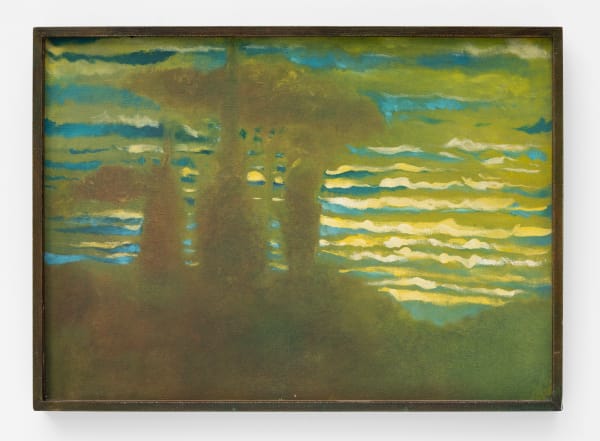
![Katie van Scherpenberg, Manchado [Stained], 2006](https://artlogic-res.cloudinary.com/w_600,c_limit,f_auto,fl_lossy,q_auto/artlogicstorage/cbprojects/images/view/6e3bc7fb43d180b81e010a66f559e8eaj.jpg)

